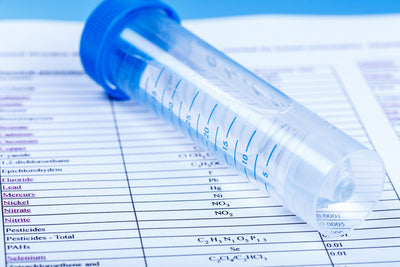Why Does EPA Allow “Acceptable Amounts” of Toxic Chemicals In Drinking Water?
RSS
Anya Alvarez | Contributor
After a hard-hitting ad campaign ran by one of our competitors, many were surprised to learn that EPA allows “acceptable amounts” of certain toxic chemicals. If you’re like others concerned who don’t want to deal “acceptable levels” of toxicity in water, this article will explain the regulatory definitions and provide tips on how to regulate the water in your home.
Understanding Water Quality Definitions
If something is toxic, you probably don't want it in your water. So why does the government allow small levels of toxic chemicals in our water? Currently the EPA has in place unenforceable water quality goals and enforceable drinking water standards. Below I highlight the difference between the two, why the EPA allows toxic levels, and how to reduce exposure to toxic chemicals in drinking water.
Non-Enforceable Water Quality Goals
Maximum Contaminant Level Goal (MCLG) - The MCLG refers to the concentration of a contaminant that does not pose any health risk to humans. However, one must not forget that MCLGs are unenforceable and therefore have no regulatory limits. For example, the MCLG for Arsenic is 0 parts per billion, but the EPA limit is 10 parts per billion. This is EPA's way of saying "we don't want anyone to drink arsenic, but it would be too expensive to fully remove it."
Enforceable Water Quality Standards/Limits
Maximum Contaminant Level (MCL) - The MCL is the maximum level of a contaminant allowed in water. Unlike the MCLG, the MCL is an enforceable limit.
Action Level (AL) - For other contaminants like lead, EPA uses a different term (Action Level) for the regulatory water quality standard. Using this definition, a municipality is in violation only if 10% or more of the samples exceed the AL. To put it a bit differently: up to 10% of the samples can exceed the Action Level, and the water is still in full compliance.
Are Regulatory Water Quality Limits For Contaminants In Line With The No-Risk Goals?
You can still be at risk, even if water quality limits meet the “no-risk goals” of the EPA. The table below shows a few chemicals where allowed concentration is higher than the no-risk goal. The complete list can be seen here.
|
Contaminant |
No-Risk Goal |
EPA Enforceable Limit |
|
Arsenic |
0 ppb | 10 ppb |
| Benzene | 0 ppb | 5 ppb |
| Lead | 0 ppb | 15 ppb |
| PCBs | 0 ppb | 0.5 ppb |
| TCE | 0 ppb | 5 ppb |
Why Does EPA Allow Any Amount Of Toxic Chemicals In Drinking Water?
EPA knows it is not economically feasible for municipalities to yield contaminant free water for large populations, the MCLs are categorized between the health risk involved to the population and the financial cost to remove chemicals such as lead from water.
Lead:
EPA acknowledges that no safe level of lead exists in drinking water (MCLG=0 ppb). However, the EPA acceptable drinking water standards allows 10% of the samples to be over 15 ppb. Homes with plumbing connections and fixtures and cities with a large number of lead-containing water service lines, make it economically unfeasible, politically unacceptable, and extremely difficult to enforce mandates. Doing so would force municipalities to dig up lead pipes and require all citizens to replace their plumbing. To avoid this, the EPA makes publicly available reports, mentioning the involved risks if citizens drink the water, while also entailing steps residents can take to minimize exposure. However, municipalities often try to hide lead levels because they are ultimately reliable. Click here for an example from Newark, New Jersey.
Arsenic:
Arsenic, which occurs naturally in some groundwater sources, does not come from municipal infrastructure or residential plumbing. Because of this, arsenic isn’t economically/politically reasonable to remove it. As a result, municipalities disclose the levels of arsenic in the water report:
"If arsenic is less than the MCL of 10 ppb, your drinking water meets EPA’s standards... EPA’s standard balances the current understanding of arsenic’s possible health effects against the costs of removing arsenic from drinking water." Check out an example of this on page 3 of this Clarkdale, Arizona report.
How To Further Reduce Exposure To Toxic Chemicals In Drinking Water
Since there are no guarantees that contaminants won’t exceed the enforceable limits, there are steps you can take to protect yourself. This can include installing a quality water filter and remaining up-to-date on water quality reports for your local area. As always, we encourage everyone to take advantage of Hydroviv's "Help No Matter What" technical support policy, where we answer questions related to drinking water and water filtration, even if you have no desire to purchase our products.
Other Articles We Think You Will Enjoy:5 Things You Need To Know About Chromium 6 In Drinking Water
Why TDS Meters Don't Tell You Anything About Lead Contamination
Does Boiling Or Freezing My Water Purify It?




